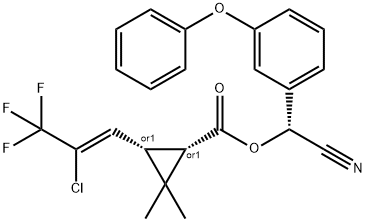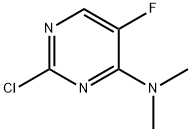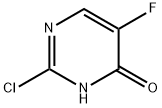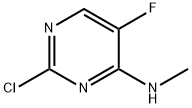2-Chloro-5-fluoropyrimidine
- CAS NO.:62802-42-0
- Empirical Formula: C4H2ClFN2
- Molecular Weight: 132.52
- MDL number: MFCD03788197
- SAFETY DATA SHEET (SDS)
- Update Date: 2025-09-25 17:15:13

What is 2-Chloro-5-fluoropyrimidine?
Chemical properties
Colorless to light yellow liquid
The Uses of 2-Chloro-5-fluoropyrimidine
2-Chloro-5-fluoropyrimidine is used to prepare 2,4-disubstituted-5-fluoropyrimidine , which is a biologically active molecule seen in anticancer agents like 5-fluorouracil.
The Uses of 2-Chloro-5-fluoropyrimidine
2-Chloro-5-fluoropyrimidine can be used as a starting material for the preparation of:
5-fluoro-2-amino pyrimidines by reacting with various amines in the presence of K2CO3, via C-N bond forming reaction.
2-chloro-5-(5-fluoropyrimidin-2-yl)benzoic acid, an intermediate, which is used in the synthesis of benzamide scaffolds as potent antagonists against P2X7 receptors.
5-fluoro-2-cyano pyrimidine, a key intermediate used for the synthesis of 5-chloro-N-[(1S)-1-(5-fluoropyrimidin-2-yl)ethyl]-N-(5-methyl-1H-pyrazol-3-yl)pyrimidine-2,4-diamine, as a potent inhibitor of the JAK2 kinase.
Preparation
Synthesis of 2-chloro-5-fluoropyrimidine: add 2,4-Dichloro-5-fluoropyrimidine and reducing metal powder to the solvent, stir to raise the temperature to the reaction temperature, slowly add acid dropwise, and keep the temperature until the reaction is completed Finish. Filtration, phase separation or direct evaporation of the solvent, and distillation under reduced pressure to remove the solvent to obtain 2-chloro-5-fluoropyrimidine.
Properties of 2-Chloro-5-fluoropyrimidine
| Boiling point: | 149.0-162.0°C |
| Density | 1.439 g/mL at 20 °C (lit.) |
| refractive index | n |
| Flash point: | 150 °F |
| storage temp. | under inert gas (nitrogen or Argon) at 2-8°C |
| form | Liquid |
| pka | -2.54±0.22(Predicted) |
| color | Clear colorless to yellow |
| InChI | InChI=1S/C4H2ClFN2/c5-4-7-1-3(6)2-8-4/h1-2H |
| CAS DataBase Reference | 62802-42-0(CAS DataBase Reference) |
Safety information for 2-Chloro-5-fluoropyrimidine
| Signal word | Danger |
| Pictogram(s) |
 Corrosion Corrosives GHS05  Exclamation Mark Irritant GHS07 |
| GHS Hazard Statements |
H302:Acute toxicity,oral H314:Skin corrosion/irritation |
| Precautionary Statement Codes |
P270:Do not eat, drink or smoke when using this product. P280:Wear protective gloves/protective clothing/eye protection/face protection. P301+P312:IF SWALLOWED: call a POISON CENTER or doctor/physician IF you feel unwell. P303+P361+P353:IF ON SKIN (or hair): Remove/Take off Immediately all contaminated clothing. Rinse SKIN with water/shower. P305+P351+P338:IF IN EYES: Rinse cautiously with water for several minutes. Remove contact lenses, if present and easy to do. Continuerinsing. |
Computed Descriptors for 2-Chloro-5-fluoropyrimidine
| InChIKey | AGYUQBNABXVWMS-UHFFFAOYSA-N |
| SMILES | C1(Cl)=NC=C(F)C=N1 |
2-Chloro-5-fluoropyrimidine manufacturer
JSK Chemicals
New Products
4,4-Difluoropiperidine hydrochloride tert-butyl 9-methoxy-3-azaspiro[5.5]undecane-3-carboxylate Indole Methyl Resin N-Isopropylurea N,N-Dicyclohexylcarbodiimide(DCC) MELDRUMS ACID 5-METHYLISOXAZOLE-4-CARBOXYLIC ACID Magnessium Bis glycinate Zinc ascorbate 1-bromo-2-butyne 2-acetamidophenol 9(10H)-anthracenone Erythrosin B, 4-Piperidinopiperidine 2-((4-morpholinophenylamino) (methylthio) methylene) malononitrile 2,4-dihydroxybenzaldehyde 3-(4-morpholinophenylamino)-5-amino-1H-pyrazole-4-carbonitrile Methyl 2-methylquinoline-6-carboxylate 2,6-dichloro-4-nitropyridine 4-Bromo-2-chlorobenzonitrile 2-(benzylamino)acetic acid hydrochloride 4-(tert-Butoxycarbonylamino)but- 2-ynoic acid 3,4-dihydro-2H-benzo[b][1,4]dioxepine 1-Phenyl-1-cycloprppanecarboxylicacidRelated products of tetrahydrofuran



![3-[(2-CHLORO-5-FLUORO-4-PYRIMIDINYL)OXY]-4-METHOXYBENZALDEHYDE](https://img.chemicalbook.in/StructureFile/ChemBookStructure6/GIF/CB3779457.gif)

![(2Z)-2-{4-[(2-CHLORO-5-FLUOROPYRIMIDIN-4-YL)OXY]BENZYLIDENE}[1,3]THIAZOLO[3,2-A]BENZIMIDAZOL-3(2H)-ONE](https://img.chemicalbook.in/StructureFile/ChemBookStructure7/GIF/CB0207067.gif)
![{4-[(2-CHLORO-5-FLUOROPYRIMIDIN-4-YL)OXY]-3-METHOXYBENZYLIDENE}MALONONITRILE](https://img.chemicalbook.in/StructureFile/ChemBookStructure5/GIF/CB6123341.gif)

You may like
-
 62802-42-0 2-Chloro-5-fluoropyrimidine, 98% 99%View Details
62802-42-0 2-Chloro-5-fluoropyrimidine, 98% 99%View Details
62802-42-0 -
 2-Chloro-5-fluoropyrimidine CAS 62802-42-0View Details
2-Chloro-5-fluoropyrimidine CAS 62802-42-0View Details
62802-42-0 -
 3-(4-amino-1-oxoisoindolin-2-yl)-1-methylpiperidine-2,6-dione 98%View Details
3-(4-amino-1-oxoisoindolin-2-yl)-1-methylpiperidine-2,6-dione 98%View Details -
 614-19-7 98%View Details
614-19-7 98%View Details
614-19-7 -
 20677-73-0 (2,2-diethoxyethyl)methylamine 98%View Details
20677-73-0 (2,2-diethoxyethyl)methylamine 98%View Details
20677-73-0 -
 3-(4-(hydroxyamino)-1-oxoisoindolin-2-yl)piperidine-2,6-dione 98%View Details
3-(4-(hydroxyamino)-1-oxoisoindolin-2-yl)piperidine-2,6-dione 98%View Details -
 57381-49-4 2-bromo-4-chlorobenzonitrile 98%View Details
57381-49-4 2-bromo-4-chlorobenzonitrile 98%View Details
57381-49-4 -
 4,6-dichloropyrimidine-5-carbaldehyde 98%View Details
4,6-dichloropyrimidine-5-carbaldehyde 98%View Details
5305-40-8
